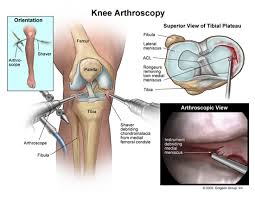Arthroscopy is the ray of light for those who have painful and debilitating joint conditions. Joint arthroscopy, also known as knee and shoulder problem, is reckoned as one of the most effective and credible options for diagnosing and curing several orthopedic issues. It is a sophisticated method and your doctor may recommend you if you have inflammation or damaged a joint over time. Usually, it is done on the knee, shoulder, hip, wrist, ankle or elbow.
What is Arthroscopy?
Arthroscopy is the procedure that allows the orthopedic surgeon to look at the residing problem in your joint. The surgeon inserts a thin instrument into the joint through a small incision. It consists of a light and a camera that provides a magnified view of the joint on the computer screen. Hence the surgeon can effectively see the damage or deterioration and on the based on that can make an accurate diagnosis.
The advantage of arthroscopy
- It is minimally invasive procedure
- It provides faster recovery
- It is less painful than open surgery
- It has less or fewer complications
When to see an orthopedic doctor for arthroscopy
If you are grappled with the below-mentioned condition, you should consult to an orthopedic doctor and see if arthroscopy is an option for you:
- Joint inflammation
- Pinched nerves
- Shoulder instability (Condition in which cartilage that lines the rim of the shoulder tears, consequently shoulder joints become loose and may dislocate)
- Rotator cuff problem in the shoulder
- Arthritis or osteoarthritis
- Misaligned kneecap
- Baker’s cyst
How the arthroscopy procedure is performed?
Arthroscopy is recommended and beneficial for those suffering from rotator cuff injuries that are quite common these days and debilitating as well. Rotator cuff includes muscles and tendons surrounding the ball and socket joint of your shoulder. It is a minimally invasive procedure that offers reduced blood loss, fewer complication and faster recovery as compared to open surgery. Though rotator cuff injuries are considered to be difficult to treat tradition, however, with the advent of arthroscopy procedure, the surgeons are able to successfully treat or repair such issues.
During the procedure, the patient will be administered local or regional or at times general anesthesia as well so that the patient feels comfortable and does not feel pain. The surgeon will also inject saline into the joint in order to inflate the surgical area, to get explicit views and control bleeding.
The surgeon makes a small incision to insert the thin instrument (arthroscope). He also makes several other small incisions to insert surgical tools. The light and camera attached with the instrument displays image on the screen that helps to guide the surgery. The procedure helps to inspect, diagnose and evaluate the problem in your joint. It also helps to perform arthroscopy surgery to treat or fix the problem.
As I mentioned that it is a less invasive procedure, however, if you knee or shoulder damage is quite prominent and the surgeon may conduct an open surgery to cure it.
Risks and Complications
Arthroscopy procedures are usually quite safe, however, like any other surgical procedure, it may have some complications and risks such as:
- Impairment to the cartilage or ligaments
- Blood clot in the leg
- Allergic reaction to the anesthesia
- Excessive bleeding
- Joint stiffness
- Injury to blood vessel or nerve
What happens after the arthroscopy?
The surgery is performed as an outpatient procedure. It means the patient can go home the same day. The incisions that are made during the procedure, may take several days or a week to heal. You may also experience some pain or discomfort for a weak or so. The consulting doctor may provide you the recovery and rehabilitation program and instruction to stabilize the joint and regain the strength and mobility after the surgery.
Action step
When you witness that your shoulder and knee condition is not responding to non-invasive treatment or methods including medication, physical therapy, consult your doctor that arthroscopy is ideal for you. Please contact us to schedule the appointment.
